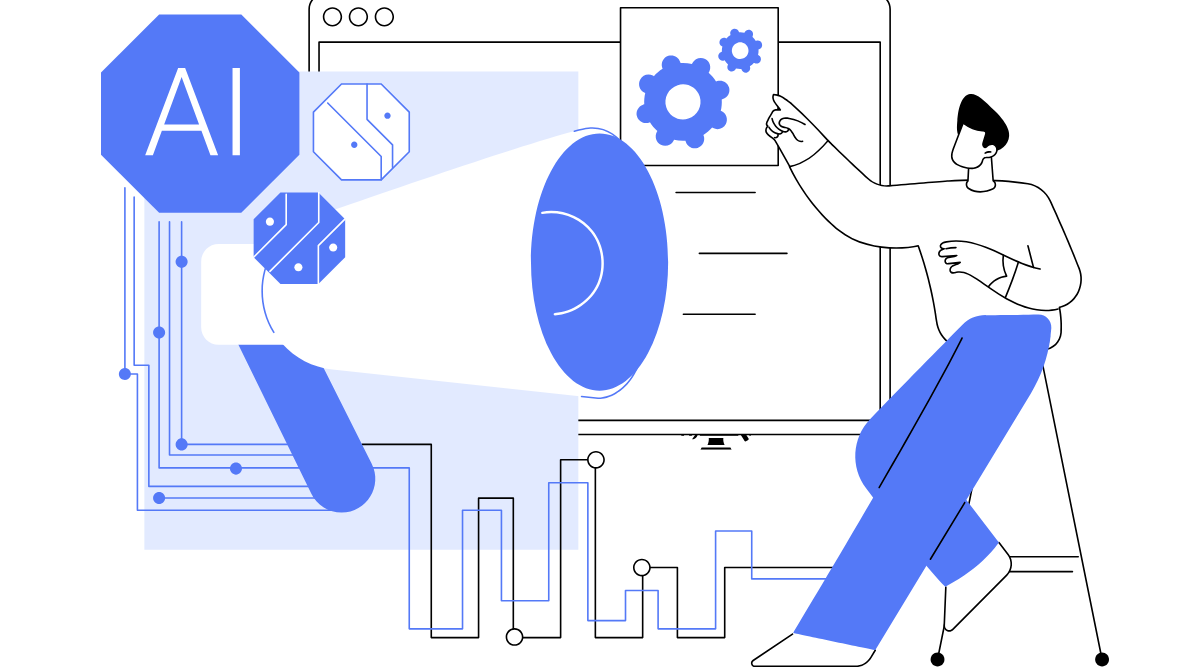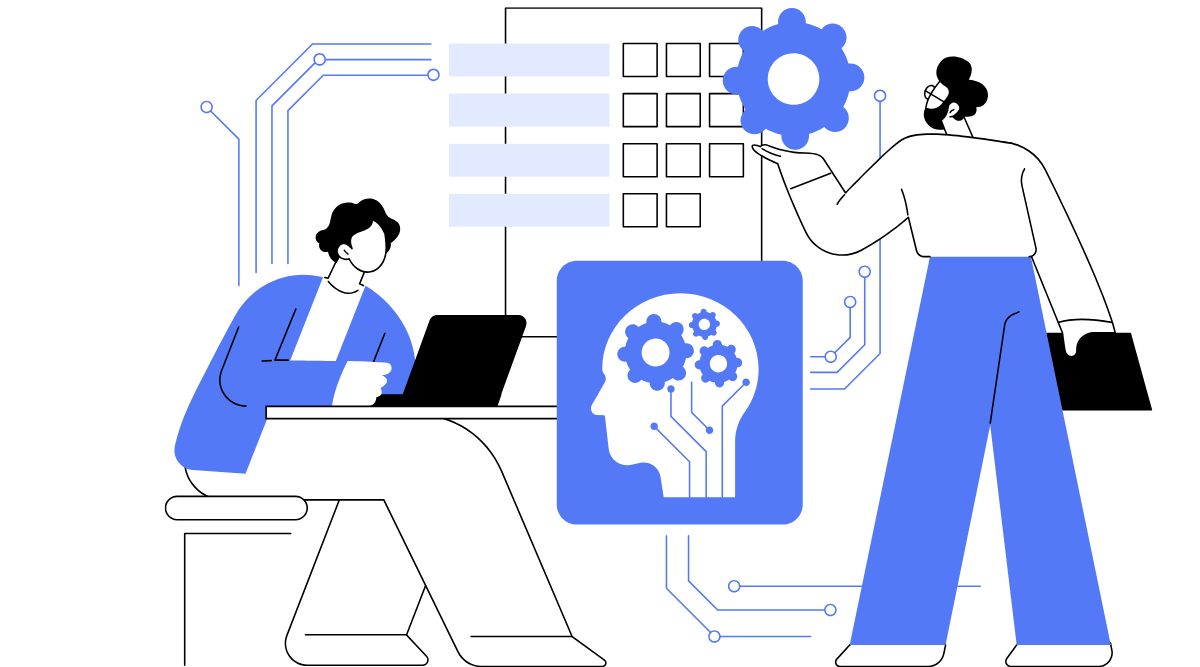How AI SDRs Propel EdTech: Strategies for Successful Course Launches
Explore how AI SDRs in EdTech drive course expansion by enhancing recruitment, streamlining processes, and boosting enrollments.

The educational technology (EdTech) sector has been rapidly evolving, utilizing artificial intelligence to transform learning experiences and drive new opportunities for educators and students alike. A crucial player in this transformation is the AI-powered Sales Development Representative (SDR), which is increasingly becoming pivotal in streamlining course launches and boosting enrollments. As a company at the forefront of AI development, Floworks.ai is well-positioned to provide insights into how AI SDRs can radically enhance the EdTech landscape.
Introduction to AI SDRs' Role in EdTech
In the competitive and ever-changing world of education technology, ensuring successful course launches and optimal student engagement is paramount. AI SDRs are a significant asset within this dynamic, playing a key role in enhancing recruitment processes and maximizing educational reach.
Understanding AI SDRs
Sales Development Representatives (SDRs) traditionally act as a bridge between marketing and sales, focusing on lead generation and qualification. With the introduction of AI, SDRs have been redefined, becoming highly efficient tools that handle large volumes of leads with precision and efficiency. AI SDRs automate repetitive tasks, analyze vast datasets for better insights, and interact with potential leads through natural language processing.
- AI and Human Integration: Automation does not completely replace human efforts but enhances them. The integration of AI SDRs allows human representatives to focus on building relationships and closing sales.
- Data-Driven Decisions: AI SDRs operate using advanced analytics, providing insights into the behavior and preferences of prospective students, allowing educational institutions to tailor their communication strategies effectively.
- Constant Availability: AI systems can engage with potential students around the clock, ensuring no opportunities are missed due to time zone differences or after-hours inquiries.
Why EdTech Needs AI-Driven Solutions
The EdTech industry spans a variety of educational tools and platforms designed to facilitate learning. With the influx of online courses and remote education, EdTech companies face the challenge of standing out in a saturated market. AI innovations address these concerns by:
- Enhancing Efficiency: By automating routine tasks, AI SDRs allow educational teams to focus on strategic initiatives rather than getting bogged down by time-consuming processes.
- Personalization: AI algorithms can customize communications based on user interactions, preferences, and performance history, ensuring that prospective students receive relevant and engaging content.
- Scalability: AI SDRs efficiently handle vast numbers of inquiries and leads, making them ideal for scaling educational offerings to meet increasing demand.
Comparative Insight: Traditional vs. AI SDRs
While traditional SDRs have a strong track record in direct sales and personalized service, AI SDRs bring several advantages that are particularly suited to the EdTech landscape.
| Aspect | Traditional SDRs | AI SDRs |
|---|---|---|
| Efficiency | Limited by human capacity and working hours | Operate 24/7, handling large volumes of data efficiently |
| Cost | Higher long-term costs due to staffing needs | Initial setup cost with lower maintenance expenses |
| Personalization | One-on-one interaction focuses on immediate contact preferences | Analyzes comprehensive data sets for customized interactions |
| Consistency | Subject to human variability | Provides uniform quality of service |
How AI SDRs Enhance Educational Content Expansion
AI SDRs are instrumental in expanding educational content, ensuring that course offerings reach the intended audience effectively and efficiently.
Aligning AI SDRs with Course Development
To effectively expand educational offerings, AI SDRs need to be aligned with the course development process. This involves:
- Data Synchronization: Ensuring AI systems have access to the latest course updates, syllabi, and target demographics to convey accurate information to prospective students.
- Feedback Integration: Utilizing feedback collected during student interactions to shape course content and delivery methods, ensuring they remain relevant and appealing.
Streamlining Marketing Strategies
Marketing is crucial for successful course launches. AI SDRs enhance marketing strategies by:
- Content Distribution: Identifying the best platforms and times to share content, maximizing visibility among potential students.
- Lead Scoring and Segmentation: Using AI analytics to prioritize leads that are most likely to convert, optimizing resource allocation for maximum impact.
Case Studies: Successful Implementations
Several educational institutions have successfully integrated AI SDRs into their course launch strategies. For instance:
- Case Study 1: An online university utilized AI SDRs to analyze existing student data and identify untapped markets, resulting in a 20% increase in enrollments over six months.
- Case Study 2: A language school deployed an AI-driven email campaign targeting prospective international students, achieving a significant boost in engagement and a 30% rise in course inquiries.
Integrating AI in EdTech: Best Practices
For EdTech companies to fully harness the potential of AI SDRs, best practices must be followed to ensure smooth integration and optimal performance.
Challenges and Solutions: AI Implementation
Implementing AI technologies can pose challenges, but strategic approaches can address these issues:
- Challenge: Integrating AI with existing systems can be complex.
- Solution: Engage cross-functional teams to ensure seamless integration and minimize disruptions.
- Challenge: Ensuring data privacy and compliance with regulations.
- Solution: Implement robust security protocols and stay updated on relevant compliance standards.
Training AI SDRs for Optimal Performance
Effective AI SDRs require continuous training and adjustments. Best practices include:
- Regular Updates: Continuous learning through updated datasets ensures AI models remain accurate and effective.
- Human Oversight: Although AI can perform autonomously, human oversight ensures quality and relevance, allowing for manual adjustments when necessary.
Feedback Loops: Continuously Improving AI Models
To maintain peak performance, AI models require consistent evaluation and refinement:
- Regular Feedback Sessions: Collect input from various stakeholders, including students and staff, to identify areas for improvement.
- Performance Metrics Analysis: Use KPIs to measure AI impact and adjust strategies accordingly.
With these strategies and insights, AI SDRs are set to transform the EdTech sector by enhancing course launches, improving recruitment processes, and ultimately driving success in a competitive educational landscape.
Boosting Enrollment Through AI-Powered Strategies
AI SDRs are increasingly essential for EdTech companies looking to enhance student recruitment efforts. By leveraging AI-powered techniques, educational institutions can effectively target prospective students and analyze enrollment data for continuous improvement.
AI in Student Recruitment: Techniques and Tools
AI technology has revolutionized student recruitment by transforming how institutions identify and engage with potential students.
- Predictive Analytics: AI tools can analyze historical data to identify patterns and predict which prospective students are most likely to enroll. By understanding these patterns, institutions can tailor their outreach strategies to engage with high-potential candidates more effectively.
- Chatbots and Virtual Assistants: AI chatbots provide instant support and answers to prospective students’ questions regarding courses, admissions, and campus life. This immediate assistance can be a crucial factor in maintaining the interest of prospective students.
- Automated Communication Campaigns: AI-driven platforms manage email and SMS campaigns effectively, ensuring that communications are personalized and timed to maintain engagement without overwhelming prospects.
Segmenting Potential Students Effectively
Understanding and segmenting potential students based on specific criteria can enhance recruitment efforts:
- Demographic Segmentation: AI can sort prospective students by age, region, education background, and other demographic factors to tailor recruitment efforts for different groups.
- Behavioral Segmentation: Observing student behaviors, such as website interactions and content preferences, allows institutions to customize their engagement strategies further.
- Interest-Based Segmentation: By assessing a student’s areas of interest—gleaned from their interactions with web content or direct inquiries—AI SDRs can personalize the educational offerings most relevant to each individual.
Analyzing Enrollment Data for Strategic Insights
Collecting and analyzing enrollment data provides educational institutions with the intelligence needed to refine recruitment strategies:
- Data-Driven Decision Making: Enrollment metrics such as conversion rates, drop-off points in the enrollment funnel, and engagement levels can be used to refine marketing strategies and course offerings.
- Feedback Analysis: Studying feedback from enrolled and prospective students can highlight gaps in the recruitment process and suggest areas for improvement.
- Continuous Monitoring: Establishing systems for ongoing data collection helps maintain a current understanding of market dynamics, allowing institutions to adapt swiftly to changing trends.

The Benefits of AI in the Educational Sector
AI's integration into education offers numerous advantages that extend beyond recruitment, positively impacting both student engagement and institutional efficiency.
Enhancing Student Engagement with AI
Student engagement greatly affects the success of educational programs and satisfaction levels. AI contributes by:
- Personalized Learning Paths: Systems powered by AI can create custom learning experiences by adjusting content delivery based on the individual pace and style of each student. This adaptability ensures that all students can engage with the material in a way that suits them best.
- Interactive Learning Tools: AI-driven applications such as interactive simulations or virtual classrooms provide dynamic alternatives to traditional learning methods, maintaining interest and promoting deeper understanding.
- Real-time Feedback: AI tools can instantly analyze student performance and provide feedback, helping students identify areas for improvement and fostering a more proactive learning environment.
The Economic Impact of AI in EdTech
From an economic standpoint, AI’s role in EdTech has implications for reducing costs and increasing scalability:
- Operational Efficiency: Automating administrative tasks reduces the need for manual intervention, freeing up resources and reducing operational costs.
- Increased Enrollment Capacity: AI allows institutions to handle a larger number of students without significantly increasing faculty numbers or administrative staff, maintaining a high-quality educational experience at scale.
- Enhanced ROI on Marketing: By targeting marketing efforts more precisely, institutions can achieve better results with lower spending, increasing the return on investment for recruitment campaigns.
Future Trends: The Evolution of AI in Learning
As AI continues to develop, it will shape future educational trends in several significant ways:
- Adaptive Learning Technologies: Emerging AI tools will advance the abilities of adaptive learning systems, making them even more responsive to student needs and further customizing educational experiences.
- Expanded Use of Virtual Reality (VR): AI in tandem with VR can provide immersive environments for subjects that benefit from hands-on experience, such as medical training or engineering.
- Lifelong Learning Platforms: Future AI applications will likely cater to lifelong learning, assisting individuals in upskilling or reskilling to meet evolving job market demands.

EdTech Course Launch Strategies Leveraging AI
Efficiently launching new courses is critical for educational growth. AI offers practical strategies for ensuring that course launches not only succeed but thrive.
Preparing for a Successful Course Launch
Effective preparation lays the foundation for a successful course launch:
- Market Research: Conduct thorough market research using AI analytics to understand the demand for different courses and identify potential competitive advantages or challenges.
- Curriculum Development Alignment: Ensure that AI tools used in the launch process are aligned with the curriculum development teams to maintain consistency and coherence in course planning.
Utilizing AI for Market Analysis
AI aids in understanding and responding to market dynamics in real time:
- Trend Analysis: By analyzing trends in education sectors and student interests, AI tools can provide insights into emerging needs or gaps in course offerings.
- Competitive Benchmarking: AI can help institutions stay competitive by analyzing competitors’ strategies, identifying what attracts students to similar programs, and formulating successful differentiation tactics.
A/B Testing: Refining Course Offerings
Post-launch, AI remains relevant in refining course offerings through A/B testing:
- Testing Variations: Different versions of course materials or delivery methods can be tested with different student groups to gauge preferences and performance outcomes.
- Data Analysis: AI analyzes feedback and performance data from these tests to recommend modifications that enhance course effectiveness and appeal.
- Continuous Improvement: Establishing a culture of continuous improvement ensures that courses remain relevant and engaging, keeping students equipped with the latest skills and knowledge.

Through these methodologies and innovations, AI not only aids in successfully launching courses but also in continuously improving educational offerings to meet evolving student needs and market demands.
Conclusion: Looking Ahead in EdTech with AI
The integration of AI Sales Development Representatives (SDRs) in the educational technology (EdTech) sector is driving profound changes that promise to redefine how educational content is developed, marketed, and consumed. At Floworks.ai, our mission is to empower EdTech professionals with AI tools that not only improve operational efficiency but also offer unprecedented customization and insight into user engagement.
As highlighted, AI SDRs excel in processing vast amounts of data, allowing them to efficiently handle student inquiries, promote personalized learning experiences, and identify emerging trends in the educational landscape. This ability not only supports educational institutions in scaling their operations but also in making informed decisions rooted in data-driven insights.
Moreover, AI SDRs ensure that human resources are used where they matter most—building relationships and crafting strategic initiatives that software alone can’t achieve. As AI continues to evolve, its integration with traditional practices presents new opportunities for growth, enhanced collaboration, and refined curriculum delivery.
Navigating the future of education with AI is not without challenges. Implementing AI technologies requires careful planning, regular updates, and a robust feedback loop to ensure systems remain relevant and efficient. Yet, these challenges pale in comparison to the potential benefits: increased student engagement, broad accessibility, and a thriving educational ecosystem that adapts to the needs of learners worldwide.
At this pivotal moment, we invite EdTech professionals to be part of this transformation. Embracing AI may just be the key to providing educational experiences that not only meet but exceed the expectations of a rapidly digitalizing world.
FAQ: Common Questions on AI and EdTech Expansion
How do AI SDRs differ from human SDRs?
AI SDRs differ from human SDRs primarily in their ability to process and analyze large volumes of data rapidly. While human SDRs are skilled in relationship-building and nuanced communication, AI SDRs excel in efficiently handling repetitive tasks. They can operate continuously without fatigue and deliver personalized content based on data-driven insights. The ideal scenario, however, combines both, using AI to handle routine tasks while human SDRs focus on strategic, interpersonal interactions.
What are the potential downsides of AI in education?
While AI offers numerous advantages, it also comes with challenges. One concern is the potential for reduced human interaction, which can be detrimental to the nuanced communication necessary in education. There's also the issue of data privacy; AI systems require access to personal data to function optimally, raising concerns about security and compliance with regulations. Institutions must ensure robust data protection measures are in place and maintain a balance between automation and personal touch.
How quickly can results be seen from AI integrations?
The timeline for observing results from AI integrations varies based on several factors, including the scope of implementation, the complexity of existing systems, and the readiness of teams to adapt to new practices. Generally, institutions might start seeing improvements in efficiency and data insights within a few months. However, noticeable changes in enrollment numbers or student engagement could take longer as the AI system learns and optimizes its processes.
How can AI enhance student engagement in EdTech?
AI enhances student engagement by offering personalized learning experiences tailored to individual preferences and performance histories. AI systems can recommend courses, provide customized resources, and even offer real-time feedback to learners, thereby making learning more interactive and relevant. This level of personalization helps maintain student interest and motivation, leading to better educational outcomes.
What future trends can we expect with AI in learning?
In the coming years, AI in education is expected to become more immersive and integrated with augmented reality (AR) and virtual reality (VR), creating highly engaging learning experiences. AI's predictive analytics capabilities will advance, allowing for more tailored educational paths and early intervention strategies for students needing assistance. Additionally, adaptive learning platforms driven by AI will likely grow, offering curriculums that evolve with student progress and changing educational needs.

